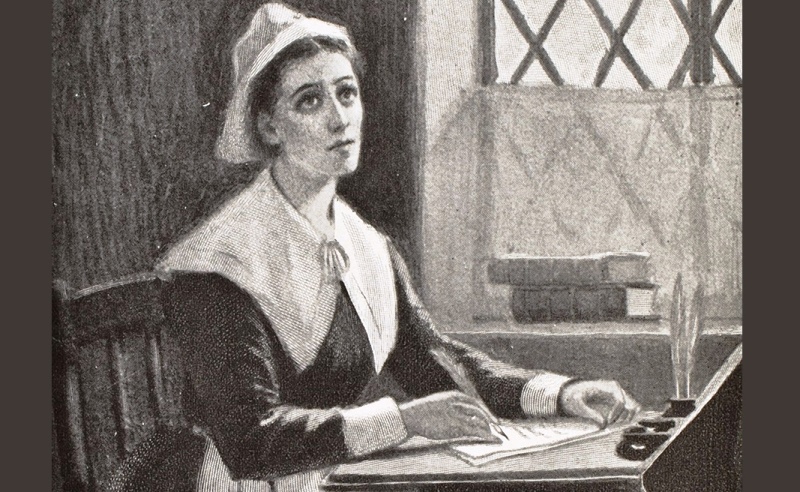In a class discussing Keats’ ‘Lamia’, our professor sought to navigate through the ‘mad woman’ trope. For the uninitiated, Lamia is a heathen goddess, born out of Lucius Apoleius’ ‘The Golden Ass’ (2nd century A.D.). She was, according to mythology, a child-eating demon. In Keats’ poem, she falls in love with a mortal, Lycius, and trades her immortality to transform from serpent to human shape. The story, however, ends with the demise of both Lycius and Lamia, as Apollonius discovers her demonic origin. Her transgression was her desire to be human, to be in love, to surpass the dictates of Fate. Sounds familiar?
The Lamia myth is an apt understanding of how women are typecast into certain derogatory genres, as soon as they wish to grow larger than their gender roles. Lilith, the first wife of Adam, is hardly discussed in reference to Christendom. She refused to be subservient to the whims of the Supreme Male, and was ousted from Eden, and made a demon. Conveniently enough, she is described as sexually wanton, stealing children in the darkness of the night. Through generations of stereotyping, blind typecasting, women have been separated into rigid categories. One is either a docile servant to social norms, or the mad woman.
Suggested read: Confessions Of A Self-Proclaimed Perfectionist: How Feminism Helped Cure My Perfectionism
In a paper titled, ‘From Female Sexuality and Hysteria to Feminine Psychology: The Gender of Insanity in Literature’, Tania Woods writes: “The term is an abstract noun coming from the Greek ‘hysterikos’, which means ‘of the womb’. It was originally defined as a neurotic condition specific to women. The exact cause of hysteria was not clearly defined, but it was thought to be the psychological manifestation of a disease of the womb. The idea of the ‘wandering womb’ had its beginnings in the teachings of Hippocrates. Ancient Greek medicine theorized that many female pathologies had their roots in a displaced womb. The idea, promoted by Hippocrates, and later Plato, that women are more susceptible to irrationality and hysterical conditions, persisted into the Victorian era. Sigmund Freud’s theories regarding hysteria were directly influenced by these beliefs. Freud, a celebrated Austrian neurologist, repeatedly dismissed women’s accounts of sexual assault, asserting that they had “imagined it”.
The glaring dichotomy between behavioral patterns expected of men and women, can be explained through the 2018 US Open Final reports against Serena Williams. Her behavior on the loss to Japan’s Naomi Osaka was indeed deplorable. It undermined the hard-earned win for Osaka who was visibly shaken by the whole fiasco. However, while her outburst was wrong, and the penalties quite deserved, the policy of favoring men in sports, was brought to light. Her transgressions of court were amply beyond the boundaries of civil sport, but would not have qualified for penalty, had she been a man. In a cartoon that went viral after the final, Williams is drawn as a petulant, mannish figure while the referee tells her opponent, ‘Can you just let her win?’
Suggested read: Want To Become A Feminist? Here Are 10 Things Men Can Do For Feminism
A blog in BostonLyricOpera reads,
“The obligatory mad scene had its origins in a Renaissance theatrical convention of representing ‘mad women as erotomaniacs. This is based on masculine assumption that women are more inclined to go mad since they are closer to the irrational by nature, and that young women’s madness is, more often than not, caused by sexual frustration of unrequited love’ (Hamana, 1995).”
The idea of sexual frustration being potent enough to be responsible for (female) insanity, may seem foolish. But several psychiatric treatments have asserted a strong belief in such a notion. The Oxford Dictionary traces the origin of the term ‘spinster’ as follows:
“The development of the word spinster is a good example of the way in which a word acquires strong connotations to the extent that it can no longer be used in a neutral sense. From the 17th century the word was appended to names as the official legal description of an unmarried woman: Elizabeth Harris of London, Spinster. This type of use survives today in some legal and religious contexts. In modern everyday English, however, spinster cannot be used to mean simply ‘unmarried woman’; it is now always a derogatory term, referring or alluding to a stereotype of an older woman who is unmarried, childless, prissy, and repressed.”
Not surprisingly, there is no male counterpart to this derogatory assumption. Historically, it has been women who lose control of their emotions. Over time, it has been strongly associated with the periodic cycle of a woman. While the shedding of the uterine wall, constant discharge of blood, and ensuing cramps, are understandably hell being wreaked on the body, society still does not find it legitimate reason to “be a little off”. In Netflix’s ‘The IT Crowd’, the sixth and final episode of Season One, speaks about this stereotype. The episode, titled ‘Aunt Irma Visits’, shows Jen turning into an actual red-faced monster. The fires of hell burn through the door whenever somebody tries disturbing her. Women have always been pictured as the polite self, one who harbors the fairest virtues, and second only to all men.
In a HerCulture blog, the author writes, “Another unfair depiction of women, the ‘Angry Woman’ trope, always ends in justified frustration. ‘Are you on your period?’ a character will joke. ‘Whoo-ee, it’s that time of the month, isn’t it?’ they reply when a scowl is shot their way. Can a woman be angry without having a ‘weak’ reason? Must there be some type of rationalization to displaying an emotion other than ‘frail?’”
The toxicity of patriarchy is so deep-rooted in its beliefs, that the slightest nudge wakes a hell fire. In Gilette’s new ad, it tackles the issues of patriarchy and the need to set a better example for the young boys. The advertisement garnered massive applause, but almost triple the amount of hate. A large portion of the world has grown so comfortable in the generational vomit of gender roles, that they refuse to accept any change, any modification at all. Some even went so far as to upload pictures of broken Gilette razors, as a “response” to the campaign. Some said that they do not need such “propagandist views” from a company whose product they used to shave their intimate areas with. Aside from proving the general failure of education, it also helped assert how and why men are so afraid of being associated with emotions. It is a woman’s domain, after all.
It is as though anything aside from calm, calculated motherhood, is treachery to the very basis of the social fabric. If a woman runs her own business, she is shown as incapable of motherhood. They are also depicted as mentally unstable in one way or the other. In ‘The Devil Wears Prada’, Miranda Priestly is snobbish, cold, and selfish. In ‘Schitt’s Creek’, Moira Rose, the hailed thespian, actress, and singer, is shown as a mother who has been neglecting and indifferent towards her children for at least twenty years of their life. Their propensity towards furthering their own ideals, their own aspirations, their personal victories, are traced as obstacles for the ‘greater good’- motherhood.
Sigmund Freud concluded a series of very sexist studies, which have been read and accepted by many in all seriousness. His claim that women are mutilated men, who spend their lives mourning their absence of a penis (‘penis envy’), would be ludicrous if it was not so outrageously sad.
According to Lisa Feldman Barrett, a neuroscientist, a study was conducted in which both men and women agreed that females are more emotional at the onset. However, when asked to report their feelings by moment, on average, men and women did not differ on how much emotion they felt. Individuals, rather than gender, were the determinant for emotionality.
This forced dichotomy is unnatural, and scientifically speaking, an elaborate joke that idiots have believed in, for centuries. There is nothing in our biological configuration that sets the sexes miles apart, so drastically. There is nothing in a man that inhibits the existence of emotions, and nothing in a woman that compels her to be defined by it.
Suggested read: 12 Myths About Feminism: BROKEN!
If there was something to be gained out of the ‘mad woman’ trope, then one could consider it. Suppose rape statistics dropped to a zero percent because potential creeps were mortally afraid of women. Suppose roadside catcallers stopped short of serenading unclad legs because they feared that women could drive an axe into their head. Suppose men stayed within the quarters of their home at night, lest they encounter a woman who sucks their soul out. If any of this was a consequence of the stereotype, then perhaps one could consider lapping it up. But alas, the stereotype only serves as entertainment, because even if women are angry, unstable, or maniacal, they can hardly ever overpower men, right?
Featured image source: Google, copyright-free image under Creative Commons License













